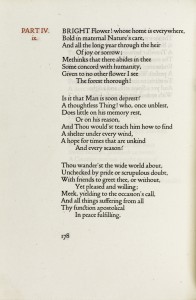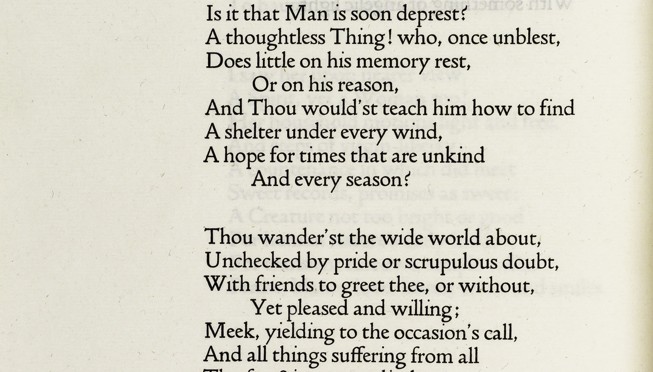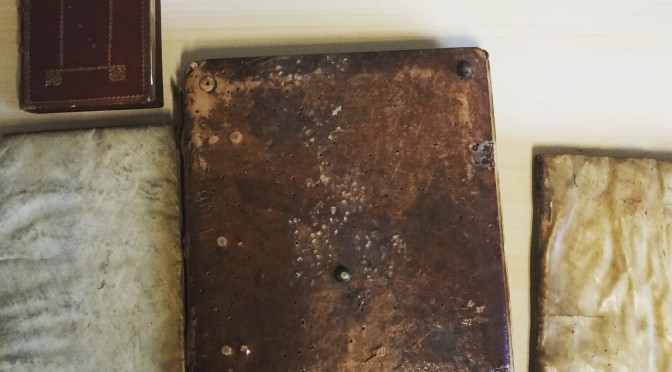When an email came through announcing Professor Elizabeth Robertson’s Matthews lecture in the Senate House on ‘Chaucer and Wordsworth’s Vivid Daisies’, the opportunity to enhance the occasion by displaying a couple of books to allow Chaucer and Wordsworth to speak for themselves through the printed word seemed too good to miss. After all, Senate House Library has strong literary collections, which we want people to be aware of and use.
Selecting an edition of Chaucer for the praise of the daisy in his ‘Legend of Good Women’ was easy. The first edition in which it appeared, the Workes of 1532, appealed to the eye by virtue of being printed in black letter, and exercised all the attraction of the earliest appearance of the work.
This copy of Chaucer’s Workes formerly belonged to Sir Louis Sterling (1879-1958), and the Sterling Library of first and fine editions of English literature turned up trumps again with Wordsworth. But the first edition of Wordsworth’s Poems in Two Volumes (1807), containing his three ‘Daisy’ poems, could not as a drab duodecimo volume be expected to exercise quite the same aura as the Chaucer folio. We played with the idea of showing the facsimile of the manuscript of Poems in Two Volumes, a good way to indicate the creative process, and also to showcase Senate House Library’s palaeography collection. Manuscript facsimiles constitute a significant proportion of this, and this Wordsworth book provides a salutary reminder that these are not exclusively mediaeval. Ultimately I chose A Decade of Years: Poems by William Wordsworth,  1798-1807 (1911). This is a selection of Wordsworth’s poems, mostly composed between 1798 and 1807, arranged to present ‘as a whole and subjectively those special characteristics which make Wordsworth pre-eminently the poet and interpreter of the mysticism of nature, to wit, his own mysticism & oneness with the spirit of the universe, “that impels all thinking things, all objects of all thought, & rolls through all things” …’ (p. [3]). The volume was printed by Thomas James Cobden-Sanderson at the Doves Press, the private press he established with Emery Walker in 1901 to print works of great literature in productions rendered beautiful with type alone, devoid of illustration and other ornament.
1798-1807 (1911). This is a selection of Wordsworth’s poems, mostly composed between 1798 and 1807, arranged to present ‘as a whole and subjectively those special characteristics which make Wordsworth pre-eminently the poet and interpreter of the mysticism of nature, to wit, his own mysticism & oneness with the spirit of the universe, “that impels all thinking things, all objects of all thought, & rolls through all things” …’ (p. [3]). The volume was printed by Thomas James Cobden-Sanderson at the Doves Press, the private press he established with Emery Walker in 1901 to print works of great literature in productions rendered beautiful with type alone, devoid of illustration and other ornament.
The Matthews Lecture is being delivered by Professor Elizabeth Robertson (University of Glasgow), at 5pm 18th November in Beveridge Hall in Senate House, London, WC1E 7HU. It is followed by a wine reception. This event is free and everyone is welcome but you must book a place. You can view the exhibition of books mentioned above in Beveridge Hall.




